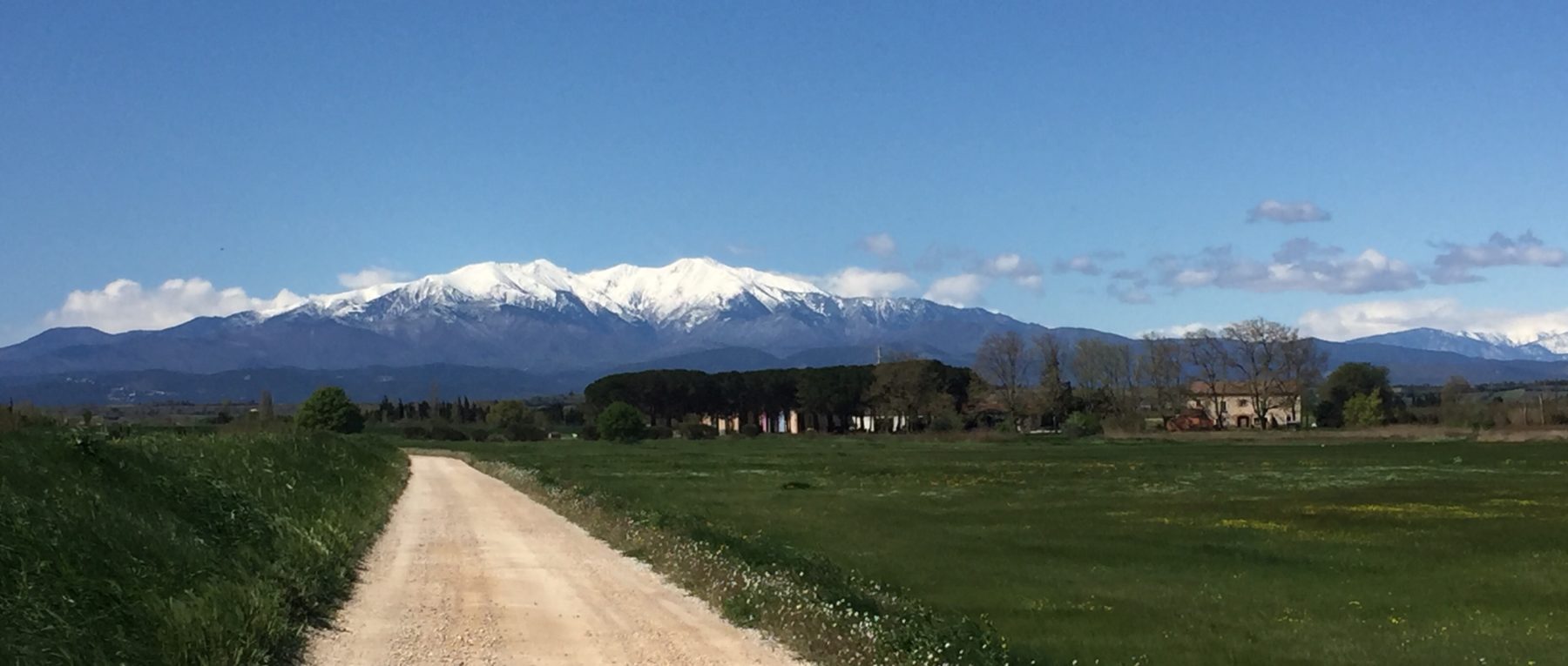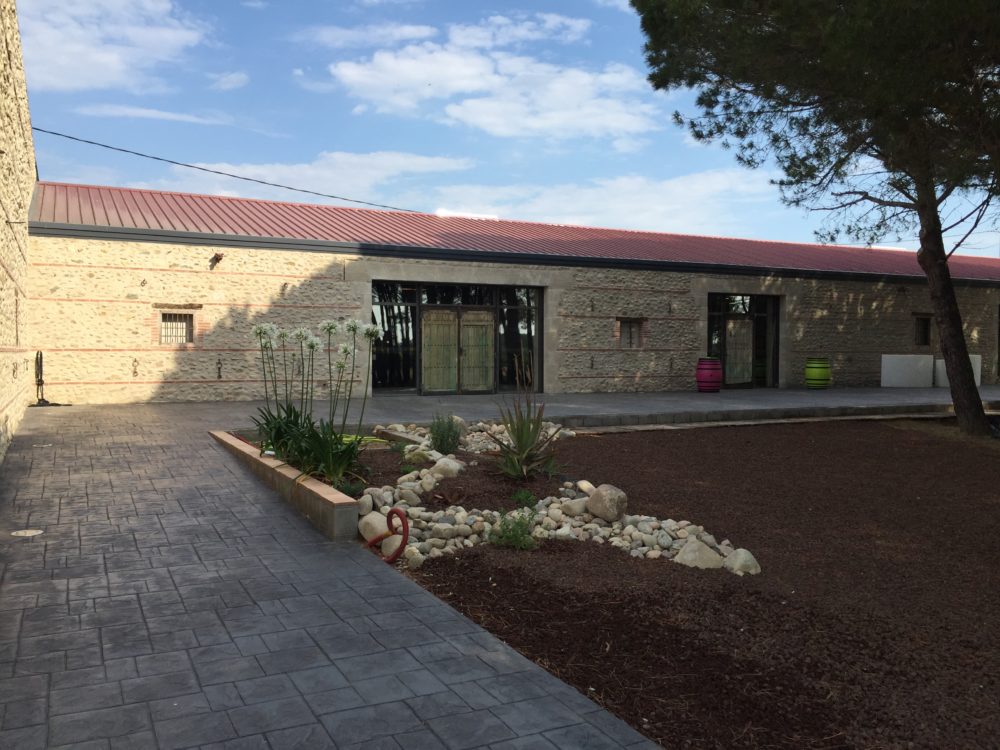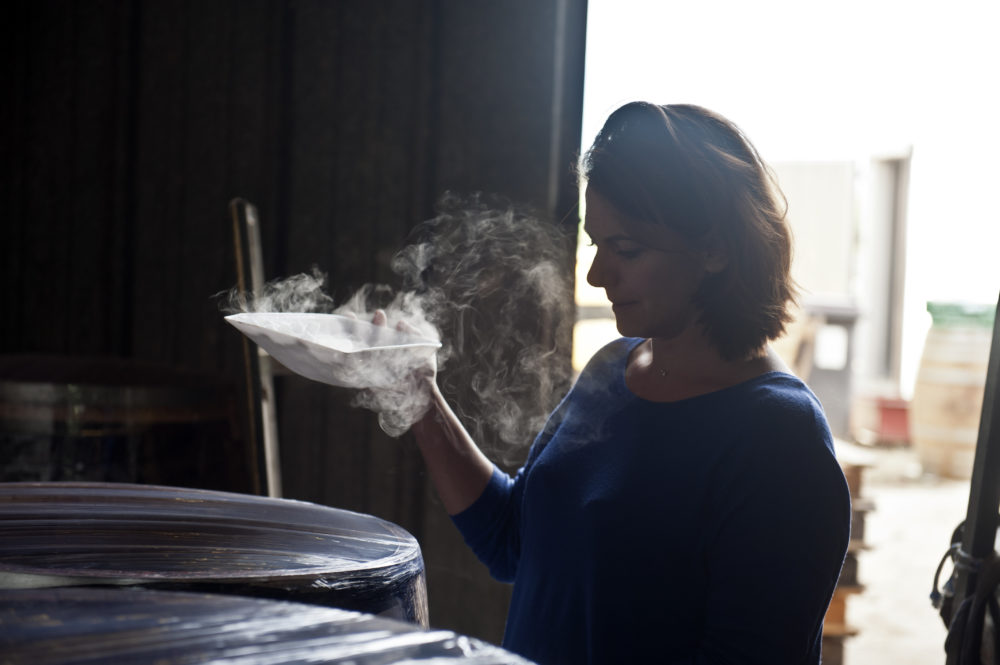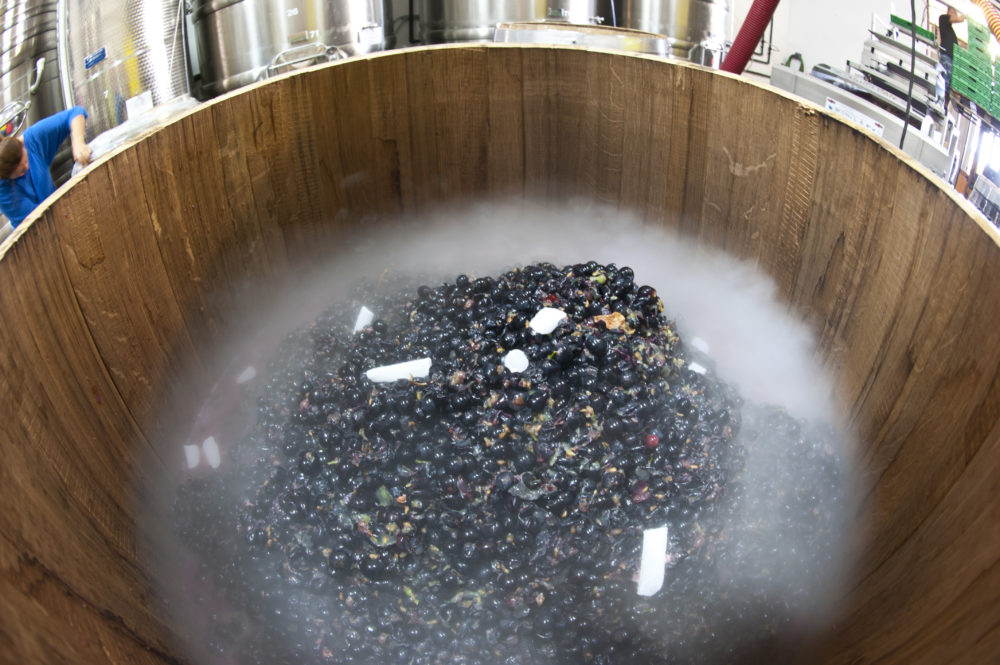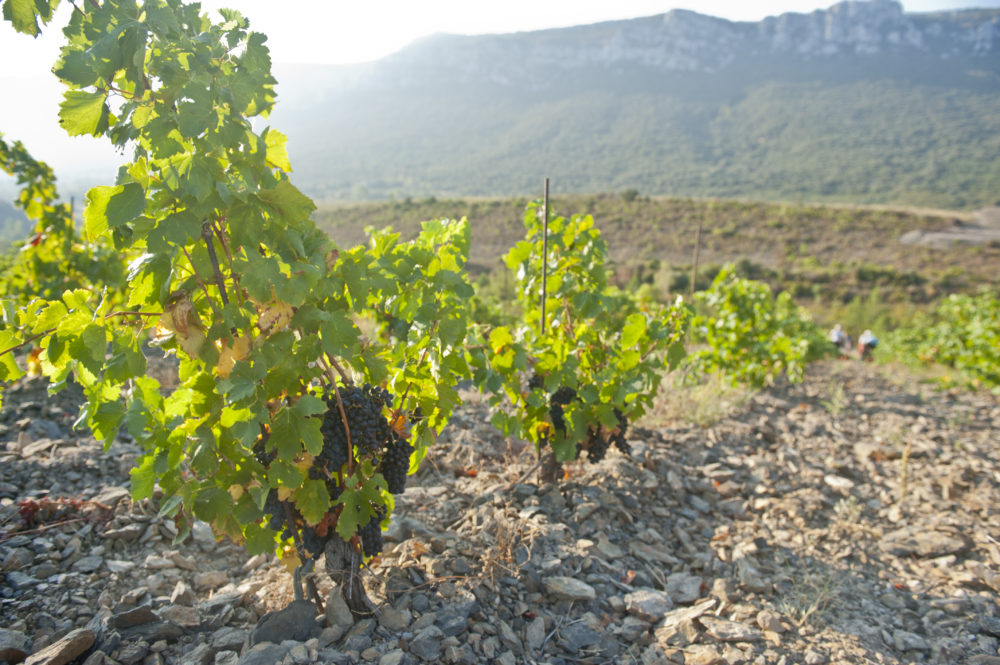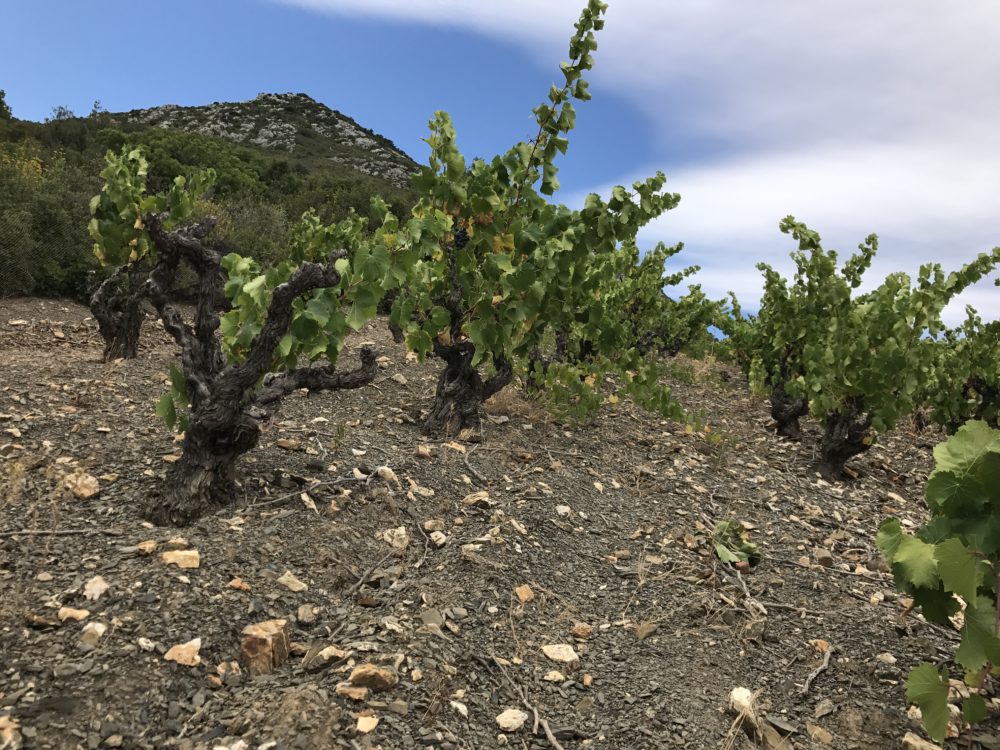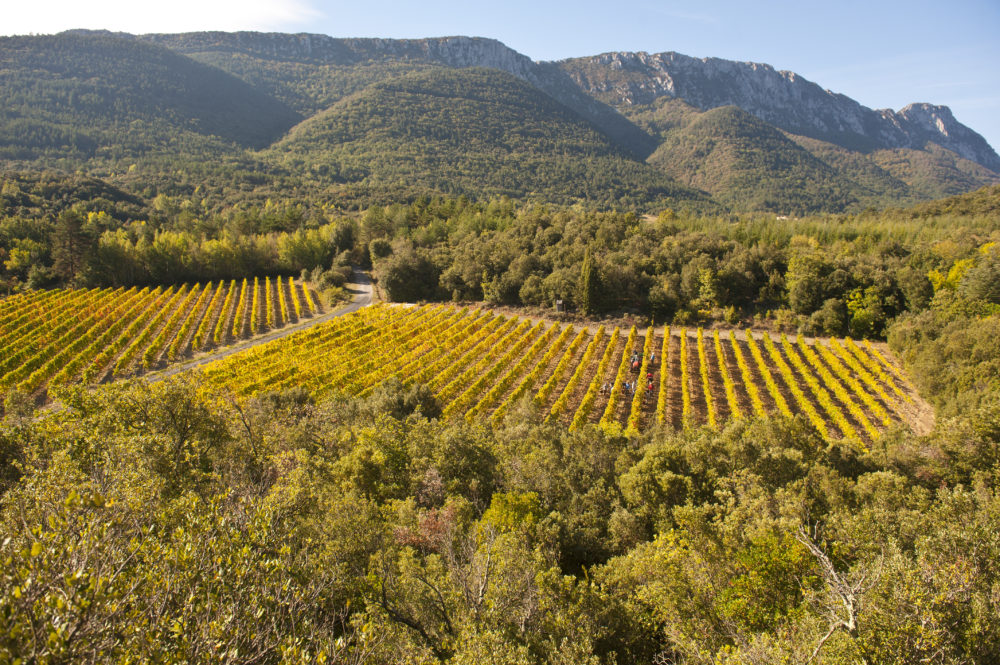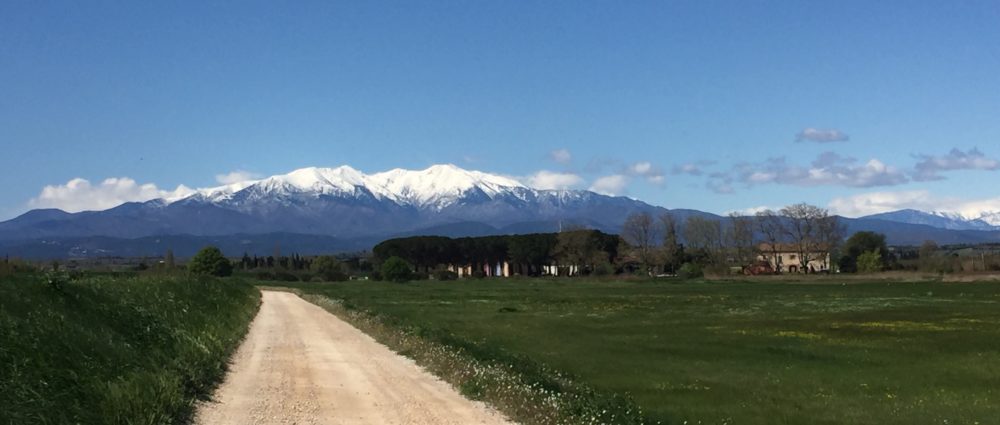
This small retrospective looks at the wines from Château de l’Ou, which is unquestionably one of the rising stars in France’s Roussillon region.
This is a family run estate created by the incredibly talented and passionate Séverine and Philippe Bourrier, and lies just to the south of Perpignan, in the plains region of the Roussillon. It consists of three separate terroirs, all farmed organically, with 64 acres located around the domaine (pictured above, this is more marl/alluvial soils), and 35 acres (split between two parcels/terroirs) of higher elevation, schist soils located in the Agly Valley.
The Wines
Séverine, who trained and worked as an oenologist in Bordeaux, oversees the winemaking and normally releases three whites; a classic Côtes du Roussillon Blanc, Côtes Catalanes Blanc Love, and Infiniment de l’Ou Blanc, and three reds; the Infiniment de l’Ou, Secret de Schistes and Velours Noir. Each of these come from a different terroir of the estate. In addition, in 2015 she released a tiny productive cuvee called Ispo Facto, which is blend of the three wines (it’s heavily weighted towards the Secret de Schistes cuvee).
The reds are all 100% Syrah, mostly destemmed, and fermented and aged in new barrels. They’re all released under the Côtes Catalanes label. Recently, Séverine has started experimenting with different types of barrels, and has even used some amphora for her whites.
Looking first at the Infiniment de l’Ou cuvee, this is from Syrah vines planted around the estate and deeper, marl soils like what’s found in the Les Aspres region. This cuvee is generally the most broad, expansive and supple of the three cuvees, and normally drinks well right out of the gate.
The other two cuvees both come from the schist soils of the Agly Valley, which is in the northern part of the Roussillon. The Secret de Schists comes from higher elevation (over 1,000 feet above sea level) brown schist soils located around the village of Saint-Paul-De-Fenouillet. It’s always 100% Syrah fermented and aged in new barrels. This cuvee always shows the most structure and tannin of the three cuvees, yet still packs plenty of fruit.
Lastly the Velours Noir comes from the estate’s 10 acres located around the village of Caudiès-De-Fenouillèdes. This is black schist terroir lying at roughly 1,260 feet above sea-level. It’s another rich, opulent wine from this estate that has solid underlying structure.
The Vintages
As to the vintages reviewed here, the standout is the 2015, yet the 2014s and 2013s are both brilliant as well. The 2014s are certainly some of the top wines in the vintage. The 2012s have shut down slightly, and the 2010 are distinctly closed at the moment. Both of these vintages should be given another year or more in the cellar.
This estate is a hidden gem in the Roussillon that readers should seek out.
About The Roussillon
The Roussillon lies on the southern border of France, close to Spain, and is part of the Pyrénées-Orientales department. This region is a large amphitheater bordered by three mountain ranges; the Pyrenees to the west, the Albères to the south, and the Corbières to the north, with the Mediterranean Sea forming its eastern edge. This is one of the sunniest and driest regions of France and the red wines are produced primarily from Syrah, Grenache and Carignan, with the whites coming mostly from Grenache Blanc, Grenache Gris, and Macabeu. The region includes numerous AOC focused on dry wines: Côtes du Roussillon, Côtes du Roussillon Les Aspres, Côtes du Roussillon Villages, Maury Sec, Collioure and Côtes Catalanes (technically classified as an IGP and not an AOC). Inside the Côtes du Roussillon Villages, you have the villages of Côtes du Roussillon Caramany, Côtes du Roussillon Villages Latour de France, Côtes du Roussillon Villages Lesquerde and Côtes du Roussillon Villages Tautavel. I’ll have more in-depth information and coverage on the Roussillon in upcoming reports.
